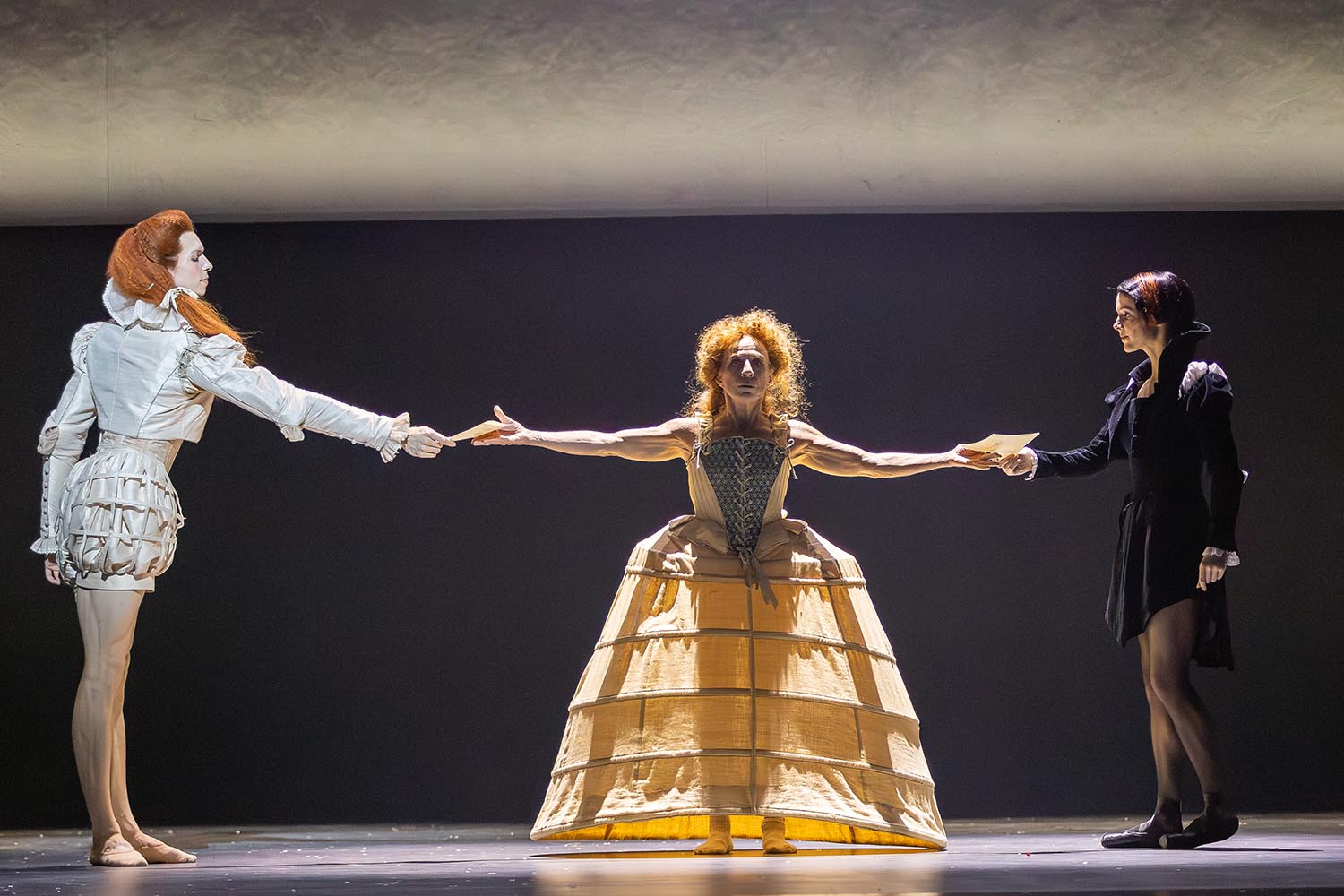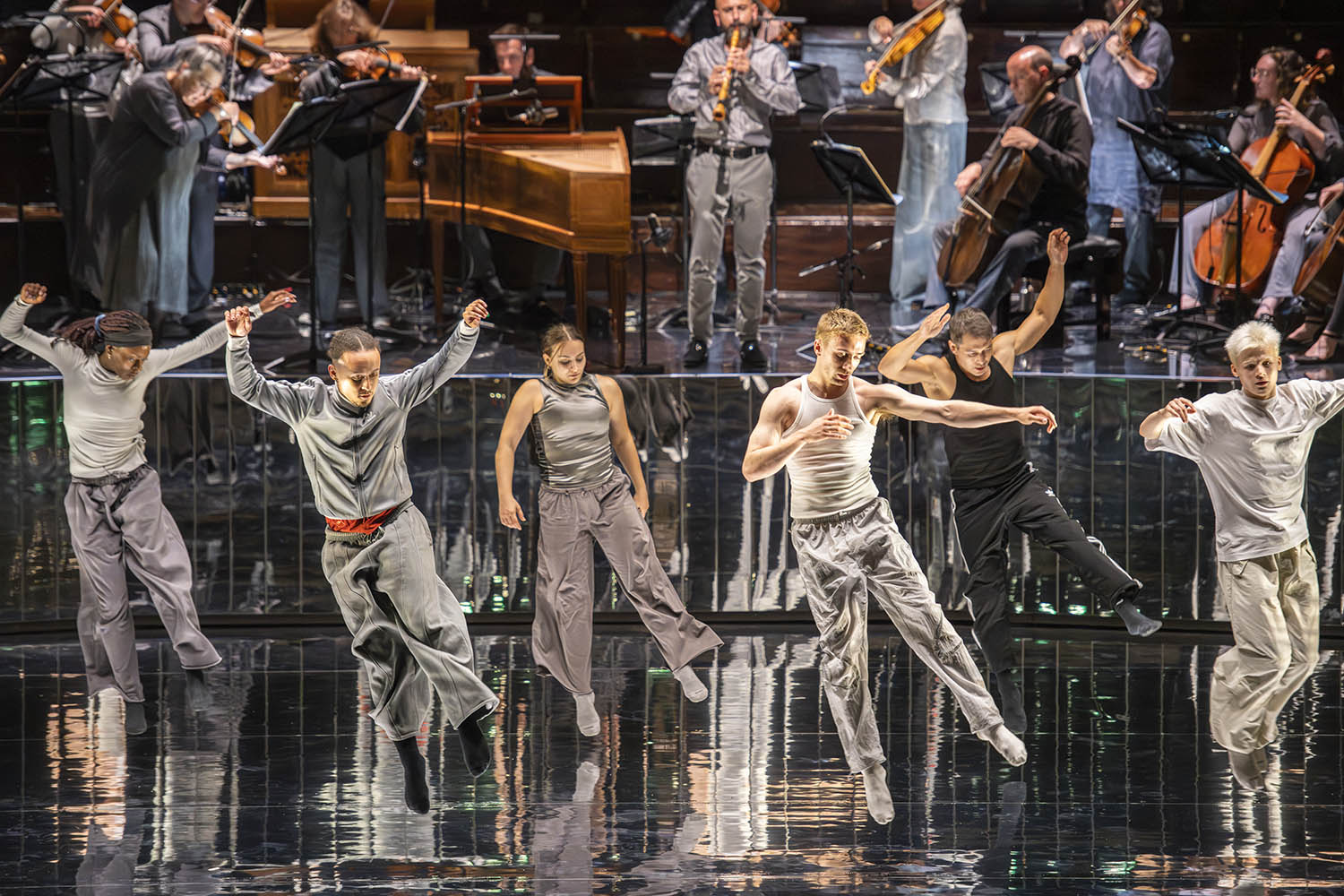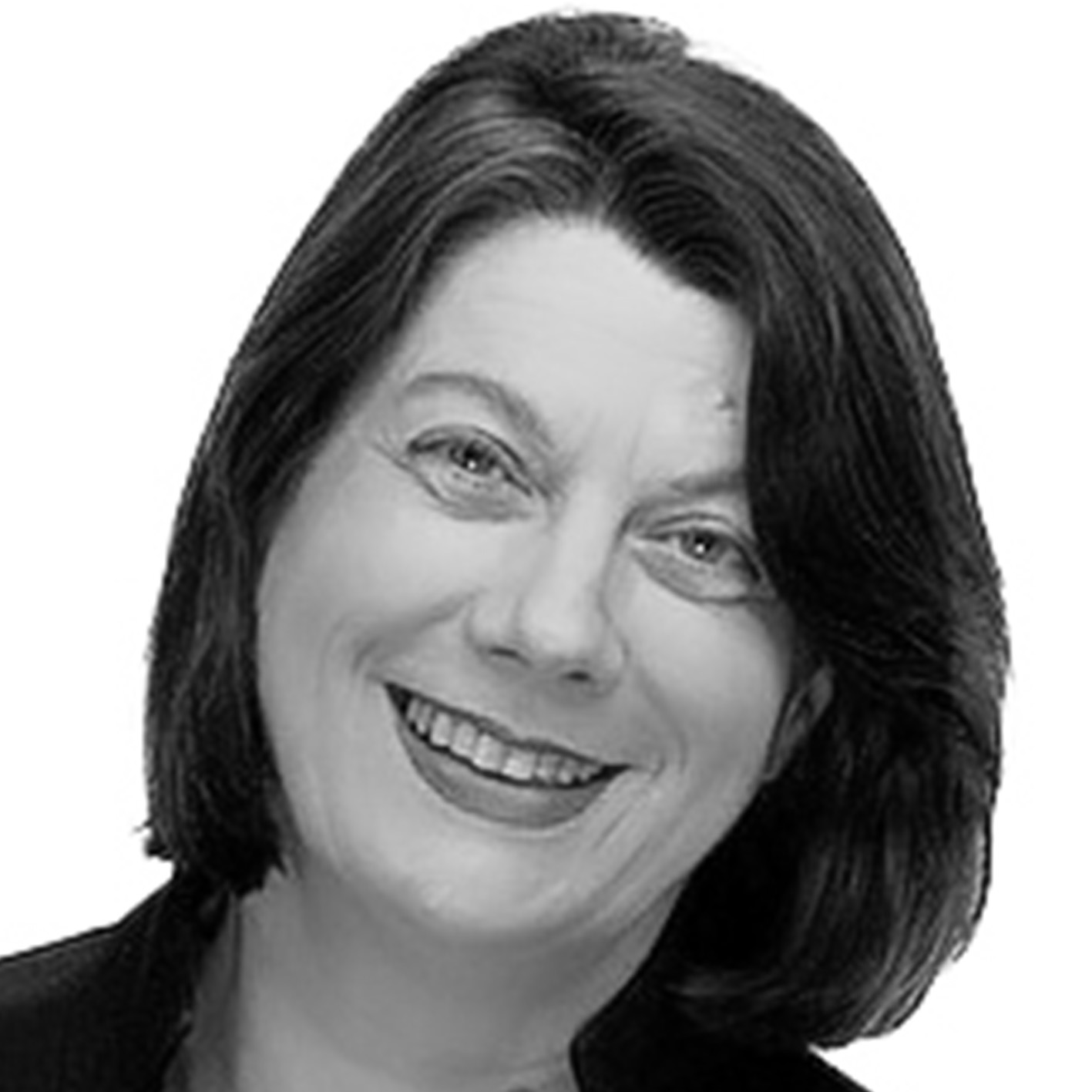In October 2023, I was invited to a rehearsal of a piece that the choreographer Kim Brandstrup was working on with the Orchestra of the Age of Enlightenment, some terrific hip-hop dancers and youngsters from Acland Burghley comprehensive in north London.
As the orchestra, which is permanently based at the school, played Bach, the kids danced, responding to the music with a sense of recognition. It was one of the most inspiring things I have ever seen – an absolute assertion of the value of embedding arts and music in the curriculum of all schools, and a transformative experience for those taking part.
That project has now grown into Breaking Bach, which premiered at the Edinburgh international festival, and has deepened and developed into a glorious, life-enhancing work in its own right.
It has a magical setting – a reflective floor that covers the platform of the Usher Hall. The orchestra stand and sit on a second platform above, dressed in silvery greys, the warm wood of their instruments adding to the glow. As they play the Overture from Orchestral Suite No 3, the dancers assemble on benches at the side, listening and watching intently. Slowly, they gather in a group, looking up at the players, who strike up the Concerto for Two Violins (with Margaret Faultless and Daniel Edgar).
As the music starts, the dancers, with their backs to the audience, shift their weight from foot to foot in time with the beat. As it grows, they turn and movement passes through them in an exact mirroring of Bach’s rhythm and flow. It’s as if their bodies have become as sensitive as a violin bow, picking up the vibrations of sound and responding to it in soft curving arms, little hops and flexes, frozen poses that appear and vanish in super-fast time. They make the music visible, expressing its quick counterpoints and changes of direction in steps that are both fluid and full of swift isolations and gestures.
Breaking perfectly fits Bach, its rhythmic complexity building a bridge between past and present, ancient and modern
As the programme progresses, through solo cello dances and the Oboe Concerto in G minor, until it reaches the heady joy of the concluding Brandenburg Concerto No 3, a conversation develops between the musicians above and the dancers below. They are always conscious of each other. At one moment, the magnificent Tommy Franzen – an associate choreographer along with Deavion Brown and Seirian Griffiths – executes a casual, gentle, one-handed twist, throws off a jump and then salutes the cellist (Andrew Skidmore).
At another, as Skidmore plays a formal sarabande, Griffiths and Nafisah Baba skim slowly around the stage, with her cradling his head, supporting and echoing him as he unfolds shapes, arabesques and presses in dreamy pensiveness.
The skills on display from the dancers – seven of them, either former or current pupils at the school – are in themselves astonishing. What is revelatory is the way breaking perfectly fits Bach, its rhythmic complexity building a bridge between past and present, ancient and modern, historic and contemporary. It is utterly wonderful.

Littlefield, Charlotta Öfverholm and Roseanna Leney in Mary, Queen of Scots
Scottish Ballet’s Mary, Queen of Scots also links history and modernity in fascinating ways. Choreographer Sophie Laplane and director James Bonas have avoided trappings in a phantasmagorical treatment of the life of Scotland’s most famous queen and her dealings with England’s monarch Elizabeth.
The set and costumes by Soutra Gilmour are stark and stylised, in greys, black and white, with sharp splashes of colour (fluorescent green for Kayla-Maree Tarantolo’s controlling Jester, scarlet for blood). The astounding score by Mikael Karlsson and Michael P Atkinson (conducted live by Martin Yates) is a rich mixture of period instrumentation and style and more modern musings.
The creators adopt an impressionistic approach, full of bold strokes. Roseanna Leney makes a dynamic, steely Mary, legs scissoring in poses that reveal both her power and her vulnerability, but the production’s best idea is to divide the role of Elizabeth between the preening Harvey Littlefield as her younger self and the terrific Charlotta Öfverholm when she is dying.
Littlefield appears on stilts at one point, commanding a cringing Walsingham (Thomas Edwards) and his army of scuttling spies. Öfverholm haunts the action like a confused ghost, sharing the griefs of a woman she never met. In one affecting scene, Mary gives birth to a balloon marked James while Elizabeth is left cradling one with no name.
The triangular relationship between Mary, her secretary Rizzio (muscular, jaunty Javier Andreu) and manipulative husband Darnley (Evan Loudon, charismatic and powerful) is portrayed in a sensual trio of weaving steps; the choreography for the corps de ballet in various courts is lively, full of jigs and hops, swoops and lifts.
In all this action, both history – a missing third husband – and comprehension sometimes go astray. But the movement is always engrossing and – as Mary’s tale reaches its dark conclusion – deeply emotional.
Photographs by Tommy Ga-Ken Wan/EIF

